So you did it. You landed that huge new client. The only catch? They’re not down the street—they’re halfway across the country. The proposal’s signed, the kickoff is booked, and your business is officially going national. It feels amazing, right?
Then comes the uh-oh moment.
You’re drafting that first invoice and a question hits you like a ton of bricks: What sales tax do I even charge? If you’re like Alex, an IT pro from Kamloops with new clients in Toronto and Calgary, this can feel surprisingly tricky. Welcome to the wacky world of Canadian inter-provincial sales tax. It looks like a beast, but I promise, you can totally tame it. Let’s break it down.
Why Does Sales Tax Get So Messy for Consultants?
Here’s the deal. Canada has two main layers of sales tax. First, there’s the federal Goods and Services Tax (GST). Simple enough. But then that GST sometimes gets blended with provincial taxes to become the Harmonized Sales Tax (HST). On top of that, some provinces decided to keep their own separate Provincial Sales Tax (PST). And of course, Quebec has its own version, the Quebec Sales Tax (QST).
It’s a patchwork quilt of rules. For physical stuff, it’s usually pretty clear—you tax based on where you ship the item. But for services like consulting, marketing, or design? The lines get blurry. And that’s exactly why so many business owners get a headache just thinking about it.
First, Let’s Figure Out: Are You a ‘Small Supplier’?
Before you even get tangled up in the provincial maze, let’s see if you need to be collecting sales tax at all. The Canada Revenue Agency (CRA) has a handy little rule for this called the ‘small supplier’ threshold.
Basically, if your business pulls in $30,000 or less in total revenue over four straight calendar quarters (not just a single year!), you’re considered a small supplier. What does that mean for you? It means you don’t have to register for, collect, or send in any GST/HST. Pretty sweet. But the second you cross that $30,000 line, registration becomes mandatory.
Think of it as the first checkpoint. If you’re under the limit, you can breathe easy for now. If you’re over it, let’s keep going.
The Golden Rule for Service Taxes: It’s All About Your Client’s Location
When you’re trying to figure out what sales tax to charge for your services, there’s one core principle that cuts through almost all the noise: the Place of Supply. Put simply, you almost always charge the sales tax rate for the province where your client actually gets the benefit of your service.
This is a huge mental shift for a lot of people. You’re not charging tax based on where your office is in Kamloops. You’re charging tax based on where your client’s business is grinding away in Winnipeg or Halifax.
Let’s See It in Action: A Province-by-Province Scenario
Let’s go back to our consultant, Alex, based in British Columbia. He needs to figure out what to charge his clients sprinkled across Canada. Assuming he’s registered for GST/HST, here’s how his invoices should look:
- Client in British Columbia: This one’s a no-brainer. He’s in BC, they’re in BC. He charges 5% GST + 7% PST.
- Client in Alberta: Alberta is the wild west of sales tax—they don’t have a provincial one! So, Alex just charges the federal part: 5% GST.
- Client in Ontario: Ontario is an HST province, which means the federal and provincial taxes are rolled into one neat package. Alex charges the single Ontario rate of 13% HST.
- Client in Saskatchewan: Okay, now it gets interesting. Saskatchewan has its own PST. Alex definitely charges the 5% GST. But what about Saskatchewan’s 6% PST? This all depends on whether he’s considered to be ‘carrying on business’ there. For just one remote client, he probably doesn’t need to register for and collect SK PST. But if he starts marketing hard to get more clients there? The rules could change.
- Client in Quebec: Quebec is a lot like Saskatchewan, with its own QST. Alex charges the 5% GST. Quebec’s rules for QST can be pretty strict, so he really needs to check if his sales volume means he has to register and collect it.
So, When Do I Actually Need to Register for PST in Another Province?
This is the million-dollar question, isn’t it? Just having one client in another province doesn’t mean you have to jump through hoops to register for their PST. The provinces really only care if you are actively ‘carrying on business’ within their borders.
What does that even mean? Well, they’ll look at things like:
- Do you have a physical office or location there?
- Do you have employees or sales agents based in that province?
- Are you regularly trying to get sales there (like with local ads)?
- Are you storing any inventory in that province?
If you’re just a lone wolf consultant providing services remotely from your home province, you often won’t check any of these boxes. But—and this is a big but—the rules can be slightly different and a bit vague from province to province. Your best bet is to always check that province’s Ministry of Finance website.
Your 3-Step Plan for Perfect Inter-Provincial Invoices
Feeling a little overwhelmed? Don’t be. You can totally handle this with a simple process you can use every single time.
- Step 1: Confirm Your Client’s Location. Don’t guess. Ask them for their official business address for tax purposes. This is the address that dictates which province’s rules you need to follow.
- Step 2: Check the Provincial Rules. For any client that isn’t in a simple GST-only province or your own HST province, just do a quick search. Popping “Saskatchewan PST rules for services” into Google will usually take you right to the government page you need.
- Step 3: Show Your Work. On your invoice, don’t just have a single line item for ‘tax.’ Be super clear. Show the GST/HST amount and, if applicable, the PST/QST amount as separate lines. This creates a crystal-clear paper trail for you, your client, and the tax folks.
Feeling Better? Don’t Let Taxes Slow Your Roll
Figuring out inter-provincial tax is actually a symptom of a healthy, growing business. Seriously, it’s a good problem to have! Once you get the hang of the ‘Place of Supply’ rule and know when to do a little extra digging, you can send those invoices out with total confidence and keep your business on the right side of the CRA.
But look, while this guide gives you a solid game plan, every business is unique. To make absolutely sure you’re doing everything by the book so you can focus on what you do best, getting some personalized advice is the smartest thing you can do. A quick chat with a professional accountant can sort out any tricky questions and put you on the fast track to growth. If you want to be certain, we recommend you reach out to an expert to talk about your specific situation.
Frequently Asked Questions
What if my client’s head office is in Ontario but I’m doing work for their Calgary branch?
Great question! The ‘Place of Supply’ rule usually looks at where the service is actually used. In your case, since the Calgary branch in Alberta is getting the benefit of your work, you’d almost certainly charge the Alberta rate (which is just 5% GST), not the higher Ontario HST rate.
Do these tax rules apply to digital products or online courses I sell across Canada?
For the most part, yes. The rules for digital goods are a lot like consulting, but they have their own special quirks, especially after some recent rule changes. The client’s location is still the most important thing, but this is one area where getting professional advice is a really, really good idea.
Whoops, I forgot to charge PST to a client in Manitoba a few months ago. What do I do?
First thing’s first: just contact your client. Explain the mistake and send them a revised invoice. Most businesses are understanding about this stuff. If for some reason you can’t do that, you’re still on the hook for that tax money you were supposed to collect, meaning it’ll probably have to come out of your own pocket.
How does this work with payment processors like Stripe or Square? Don’t they handle this?
Nope. Not at all. Tools like Stripe and Square are amazing at processing payments, but they are not your accountant. It’s 100% your job to set up the correct tax rates in their system. They give you the tool, but you have to tell it what numbers to use based on where your client is.
My client in another province is a non-profit. Does that mean they’re tax-exempt?
Never, ever assume anyone is exempt. While some specific organizations or types of purchases might be exempt from GST/HST or PST, it’s definitely not a blanket rule. Plenty of non-profits and government agencies pay sales tax just like everyone else. Always get confirmation of their status before you decide not to charge tax.

